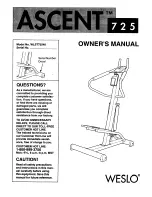
II. TESTING METHODOLOGY
A.
Monitoring Equipment
Monitoring of short-term concentrations was performed using portable real-time aerosol
monitors (
personal
DataRAM Model PDR-1000) manufactured by Monitoring Instruments for
the Environment, Inc. (MIE). The PDR-1000 is a high sensitivity nephelometric (i.e.,
photometric) monitor that uses a light scattering sensing chamber to measure the concentration
of airborne particulate matter (liquid or solid), providing a direct and continuous readout as well
as electronic logging of the data.
The PDR-1000 aerosol monitors as obtained are calibrated to Arizona road dust over a
measurement range of 0.001 to 400 mg/m
3
. In order to be utilized to measure short-term glycol
or oil mist concentrations, the monitors were first calibrated for the smoke or haze machines and
fluids being used. Calibration of the aerosol monitors was conducted by collecting simultaneous
measurements with a series of sampling pumps and PDR-1000 aerosol monitors, mounted on
tripods.
B. Monitoring
Procedures
The testing is typically conducted in a two-step process. The first step involves
collecting sufficient data to calibrate the aerosol monitors for the equipment and fluid
combination being used. The second step involves using the calibrated aerosol monitor to
identify distances from the smoke release point where exceedances of the guidance levels occur.
These monitoring data are used to develop general Guidelines under conservative use conditions
that can be used to ensure peak exposures to actors do not occur. The calibration and sampling
procedures are discussed in detail in the ENVIRON Air Sampling Protocol (ENVIRON 2001a).
For the Delta 3000 fog machine, the calibration step has already been conducted for the
following fluids: Clear Fog Fluid, Light Fog Fluid, Rosco Fog Fluid, and Stage & Studio Fluid
(ENVIRON 2002).
To measure the levels of smoke present at different distances from the release point, a
series of six tripods equipped with aerosol monitors was used. The six tripods were placed at
distances ranging from 5 to 30 feet from the Delta 3000 release point for the 100% and 50%
settings, and at distances ranging from 3 to 18 feet for the 10% setting. The Delta 3000 was
turned on for 30 to 60 seconds, allowing sustained smoke generation to occur, and then turned
off. The aerosol monitors collected logged data on the smoke levels as the concentrations
gradually dissipated. Ventilation conditions typical for a theatrical stage were used.
Testing of the Delta 3000 was conducted on the stage of the Ginsburg Theatre at
Lawrence Academy in Groton, Massachusetts.
ROSCO DELTA 3000
-3-
E N V I R O N







































